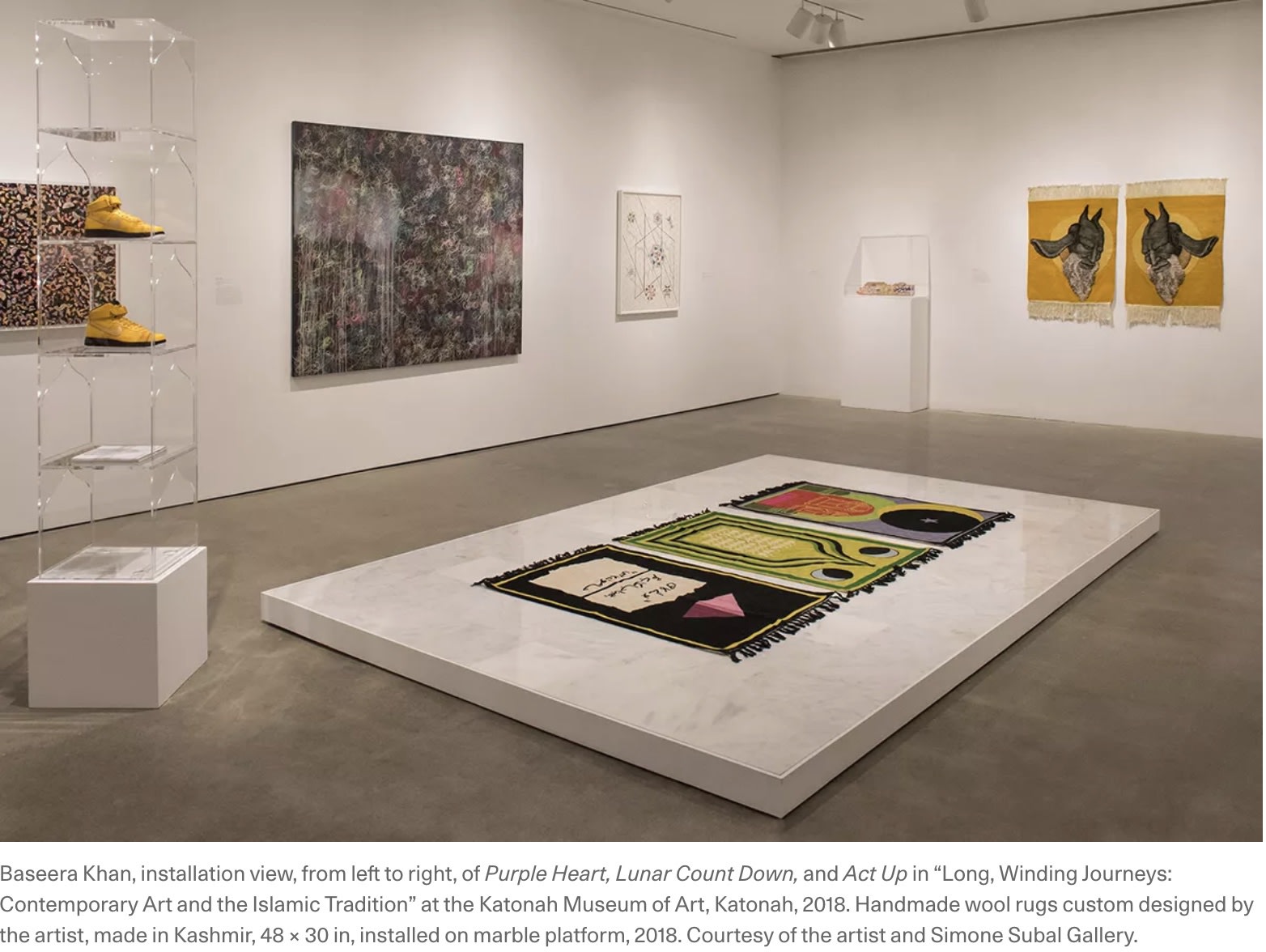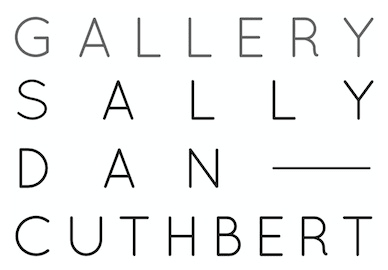"Sit down. Be humble," raps Kendrick Lamar. Every day, five times a day, millions of Muslims around the world perform salat, a ritual prayer, and do just that-upon a prayer rug. They bow their head to the ground in complete prostration or sajda, submitting themselves to God as they face qibla, the direction towards the Ka'aba, an ancient sacred site in Mecca, Saudi Arabia.
The prayer rug, though not a necessity, marks a clean physical space and the intention to supplicate. It is treated with the utmost care, lasting a lifetime or even generations. Now, contemporary Muslim artists living in the Americas and Europe-like Saks Afridi, Baseera Khan, Abdullah M. I. Syed, Zoulikha Bouabdellah, Samira Idroos, Hamra Abbas, Mounir Fatmi, and Anusheh Zia-are upturning the traditional decorative vocabulary of the prayer rug to foster understanding of an often misunderstood and misrepresented religion.
These artists nimbly negotiate the sacred and profane, plucking the prayer rug out of Oriental tradition and into decolonial theory by incorporating elements of contemporary culture like UFOs, sneakers, and hip-hop lyrics and using unconventional materials. The carpet is their medium to preserve artisanship, challenge capitalism, censorship, and patriarchy, and to, above all, firmly plant their roots in the East and the West.

When Abdullah M. I. Syed moved from Pakistan to the United States, he observed that instead of the theological government he was accustomed to, the pursuit of money reigned supreme in the U.S. His choice of currency as a medium investigates “the current nature of power in a political climate of the degeneration of democracy and staggering levels of social inequality.” His work Flying Rug (2008) is meticulously made of folded U.S. dollar bills organized into an Islamic geometric pattern, indicating the religious significance of prayer rugs in his homeland and paying respect to the intense crafting process it requires. Simultaneously, through the title, Syed shares a personal reflection on migrating “from the East to the West for security and a better financial future,” he said, as well as the commodification of the rug itself as a Pakistani export item, the shadows cast on the walls suggesting an “Oriental dream.”


